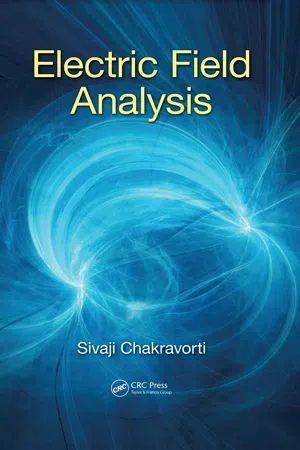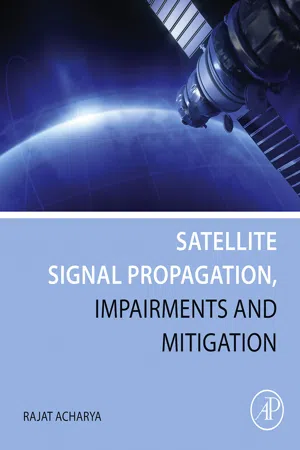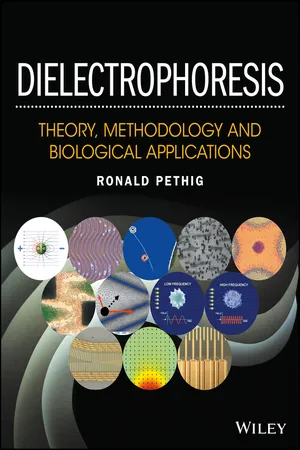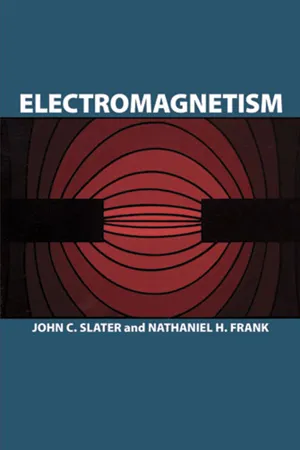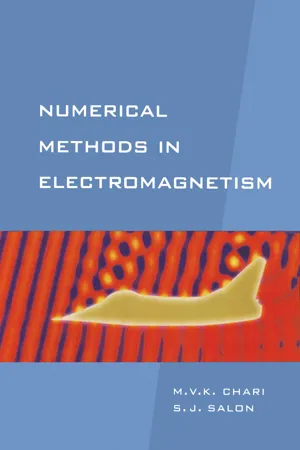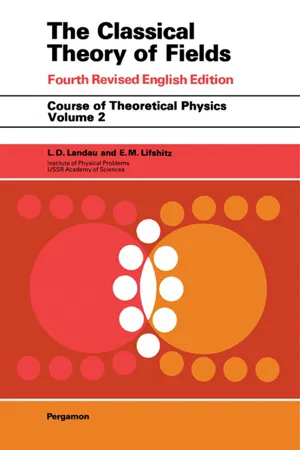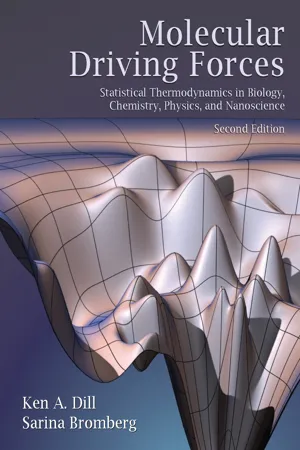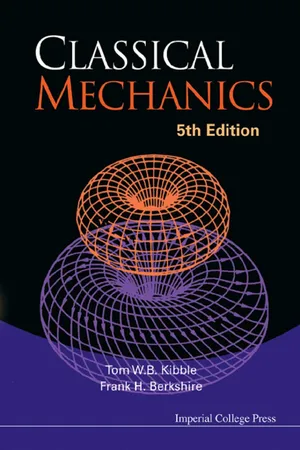Physics
Electromagnetic Potential Definition
The electromagnetic potential is a concept in physics that describes the potential energy associated with electromagnetic fields. It is a fundamental quantity in the theory of electromagnetism and is used to describe the behavior of electric and magnetic fields. The electromagnetic potential is a key concept in understanding the interactions between charged particles and electromagnetic fields.
Written by Perlego with AI-assistance
Related key terms
Related key terms
1 of 4
Related key terms
1 of 3
10 Key excerpts on "Electromagnetic Potential Definition"
- eBook - ePub
- A. L. Stanford, J. M. Tanner(Authors)
- 2014(Publication Date)
- Academic Press(Publisher)
13Electric Potential
Publisher Summary
This chapter discusses electric potential. Electric fields are vector fields that have both magnitude and direction at every point at which the field is defined. The electrical properties of space can also be described by electric potential, which is, in some respects, a simpler and more practical concept than the electric field. Electric potential is simpler than electric fields because electric potential is a scalar quantity and, therefore, has no direction associated with it. Electric potential is more practical than the electric field because differences in potential, at least on conductors, are more readily measured directly. Electric potentials and electric fields in a given region are related to each other, and either can be used to describe the electrostatic properties of space. The gravitational potential energy of an object at a point is meaningful only in terms of the difference in potential energy between that point and the potential energy specified at some reference point. Electric potential should have characteristics similar to those of gravitational potential energy for electric potential to be equally useful.We have stressed that electric fields are a means of characterizing a physical property of space caused by the presence of electrostatic charge. Electric fields are vector fields that have both magnitude and direction at every point at which the field is defined. The electrical properties of space can also be described by electric potential, which is, in some respects, a simpler and more practical concept than the electric field. Electric potential is simpler than electric fields because electric potential is a scalar quantity and, therefore, has no direction associated with it. Electric potential is more practical than the electric field because differences in potential, at least on conductors, are more readily measured directly. - eBook - ePub
- Sivaji Chakravorti(Author)
- 2017(Publication Date)
- CRC Press(Publisher)
q is located at a given position within an electric field produced by a system of charges. The test charge will experience a force due to the source charges. If the test charge moves in the direction of the field forces, then the work is done by the field forces in moving the test charge from position 1 to position 2. In other words, energy is spent by the electric field. Hence, the potential energy of test charge at position 2 will be lower than that at position 1. On the other hand, if the charge is moved against the field forces by an external agent, then the work done by the external agent will be stored as potential energy of the test charge. Hence, the potential energy of the test charge at position 2 will be higher than that at position 1. Here, it is to be noted that the force experienced by the test charge within an electric field is dependent on the magnitude of the test charge. Hence, the potential energy of the charge at any position is dependent on its magnitude and the distance by which it moves within the electric field.The concept of electric potential is introduced to make it a property, which is purely dependent on the location within an electric field and is independent of the test charge. In other words, it is a property of the electric field itself and not related to the test particle. Hence, electric potential (ϕ) at any point within an electric field is defined as potential energy per unit charge at that point and hence it is a scalar quantity. The unit of electric potential is volt (V), which is equivalent to joules per coulomb (J/C). It is interesting to note that electric field intensity is defined as force per unit charge and electric potential is defined as potential energy per unit charge.However, it is also practically important to note that absolute values of electric potentials are not physically measurable; only difference in potential energy between two points within an electric field can be physically measured; that is, only the potential difference between two points within an electric field is measurable. The work done in moving a unit positive charge from one point to the other within an electric field is equal to the difference in potential energies and hence difference in electric potentials at the two points.FIGURE 1.7 Pertaining to the definition of electric potential.As shown in Figure 1.7 a, consider that a unit positive charge is moved from point 1 to point 2 by a small distance dl . The force experienced by the unit positive charge at point 1 is the electric field intensityE →. Then the potential difference between the ending point 2 and starting point 1 is given byϕ 2-ϕ 1= -E →⋅d l→ ( 1.16 )In the above equationis the work done by the field forces in moving a unit positive charge from point 1 to point 2. In this case, the potential energy of point 2 will be lower than that of point 1 and hence the potential difference (ϕ2 −ϕ1 ) will be negative. For this purpose, the minus sign is introduced on the right-hand side (RHS) of Equation 1.16E →⋅d l→ - Rajat Acharya(Author)
- 2017(Publication Date)
- Academic Press(Publisher)
Chapter 2Maxwell's equation and EM waves
Abstract
This chapter deals with the Maxwell's equations. This is the basic technical prerequisite for the rest of the book. It starts with the statement of the equations and explains the significance of each with different forms that these equations can take. Using these equations and imposing definite conditions, both the static, electric and magnetic fields are derived and discussed to explain different aspects of them. Then the dynamic case of generation of electromagnetic fields and waves is addressed. Both the electric and magnetic field component of the wave and the scalar and vector potentials are thoroughly discussed. Finally, the Poynting theorem is explained and the Poynting vector is defined.Keywords
Electric fields; Magnetic fields; Electromagnetic wave; Vector potential; Poynting vector2.1 Electric and Magnetic Fields
In this book, we shall deal with the satellite signals which are basically electromagnetic (EM) waves. These waves traverse through space as simultaneous electric and magnetic fields. Each of these fields gets generated from the variations of the other field and they are mutually orthogonal in direction. To understand the signals, it is necessary at the outset to clearly define and explain the origin of the electric and magnetic fields constituting the wave. It is important to realize how these fields are sustained and how they behave, as they propagate through free space or through a medium. In this chapter, we shall learn about the EM wave propagation and its behaviour in free space.By the term ‘Field’, in a strict sense, we actually mean any physical quantity which can be specified at all points in the physical space of our interest. It may take different values at different points in this region and may vary with time (Galbis and Maestre, 2012- eBook - ePub
Dielectrophoresis
Theory, Methodology and Biological Applications
- Ronald R. Pethig(Author)
- 2017(Publication Date)
- Wiley(Publisher)
An approaching electrophile will tend to head towards those surface regions of the molecule where V (r) attains its most negative values (i.e., local minima of the electrostatic surface) because this is where the molecule's electrons are most dominant and potentially available to form valence bonds with other atoms. 4.4 Electrostatic Field Energy From Equation (4.16) the electrical potential (defined as the potential energy per unit charge) at a point in an electrical field is equal to the work done against the field E in bringing a unit charge from infinity to that point. We can thus write the energy of a point charge q 2 in the field of a single point charge q 1 as: where V 21 is the potential at q 2 due to q 1. We can also say that the potential is equal to the work returned by the system as one of these charges is taken back to infinity. The two charges therefore have a mutual and reciprocal energy, so that Bringing another charge q 3 into the field increases the energy: The mutual energies of charge pairs also allow us to express this as: Extending this logic to a complete and closed system of n charges: where V i is the potential q i due to the remaining n − 1 charges in the closed system. If we designate V o as the potential arising from the charges being uniformly distributed with a volume density ρ throughout a dielectric, the energy can be expressed as a volume integral: (4.31) This integral must be carried out over a volume that encloses all of the charge. Charges are rarely distributed throughout the bulk volume of a dielectric, but appear as a surface charge density σ on conductors that form, for example, the electrodes of a capacitor. In this case the increase in the potential energy of the field results from work done by the electromotive force of a battery in building up this surface charge and can be evaluated from a surface integral of the form: Stratton [3, p - eBook - ePub
- John C. Slater, Nathaniel H. Frank(Authors)
- 2012(Publication Date)
- Dover Publications(Publisher)
Probably part of the trouble with these theories is the fact that new phenomena are appearing as we go to very rapid particles of very high energy, which complicate the whole theory. These are the phenomena of the forces between the particles, neutrons and protons, in the nucleus. There is good evidence that these forces are not electromagnetic, but of another variety, produced not by the electromagnetic field, but by a meson field. This field has been described mathematically by analogy with electromagnetic theory. It similarly has a wave aspect, but also a corpuscular aspect, the corpuscles in this case being mesons, rather than photons. It is thus becoming likely that there exist in nature a number of different levels of forces and particles: the electromagnetic field and the photons, the electrons and protons and neutrons and their associated fields of the de Broglie or Schrödinger type, and the mesons and their fields. And the guiding pattern for the development of all these theories is at present the electromagnetic theory in its classical form. It remains to be seen what final synthesis of these various theories can eventually be made.We are now ready to proceed with our study of classical electromagnetic theory, which alone we shall take up in this volume. We start in the historical order, treating electrostatics, first from the basis of Coulomb’s law, then from the standpoint of field theory, showing as Faraday did how much that helps us in the study of problems involving dielectrics and conductors. Then we take up in a similar way the magnetic field, passing on through the study of electromagnetic induction to Maxwell’s equations, and to their application to the electromagnetic theory of light and of other electromagnetic radiation fields.1. The Force on a Charge. —Electromagnetic theory deals with the forces acting on charges and currents. We find that an electric charge at a given point of space is acted on by two types of force: an electric force, independent of its velocity, and a magnetic force, proportional to its velocity (that is, to the current carried by the charge), and at right angles to its velocity. We find that different charges at the same point of space are acted on by different amounts of force, and we arbitrarily define the strength of the charge as being proportional to the magnitude of force acting on it in a given field. We shall see later how to define the unit of charge, the coulomb. We can define two vectors at every point of space, E the electric intensity, B the magnetic induction, such that the force F on a charge of q coulombs moving with velocity v - eBook - ePub
- Sheppard Salon, M. V.K. Chari(Authors)
- 1999(Publication Date)
- Academic Press(Publisher)
1BASIC PRINCIPLES OF ELECTROMAGNETIC FIELDS
1.1 INTRODUCTION
This chapter is intended to introduce and to discuss the basic principles and concepts of electromagnetic fields, which will be dealt with in detail in succeeding chapters. The concept of flux and potential is discussed and Maxwell’s set of equations is presented. The description of electric and magnetic materials then follows. We then discuss the set of differential equations that are commonly used as a starting point for the numerical methods we will study. An explanation of some of the more popular choices of state variables (scalar and vector potential or direct field variables) is then presented.1.2 STATIC ELECTRIC FIELDS
The electric charge is the source of all electromagnetic phenomena. Electrostatics is the study of electric fields due to charges at rest. In SI units the electric charge has the units of coulombs after Charles Augustin de Coulomb (1736–1806). The charge of one electron is 1.602 × 10−19 coulombs. In rationalized MKS units an electric charge of Q coulombs produces an electric flux of Q Coulombs. In Figure 1.1 we see the electric charge emitting flux uniformly in the radial direction in a spherical coordinate system with origin at the charge. If we consider a closed surface around the charge (for example, the sphere shown in Figure 1.1 ), then all of the flux must pass through the surface. This would be true for any number of charges in the volume enclosed by the surface. Using the principle of superposition, we conclude that the total flux passing through any closed surface is equal to the total charge enclosed by that surface . This is Gauss’ law and one of Maxwell’s equations. If we define the electric flux density as the local value of the flux per unit area then we may writeFigure 1.1 Point Charge and Flux(1.1)where ρ is the charge density. This is the integral form of Gauss’ law. From the symmetry of Figure 1.1 - eBook - ePub
- L D Landau(Author)
- 2013(Publication Date)
- Pergamon(Publisher)
“elementary” particles, i.e., particles whose state we assume to be described completely by giving its three coordinates and the three components of its velocity as a whole. It is obvious that if an elementary particle had finite dimensions, i.e. if it were extended in space, it could not be deformable, since the concept of deformability is related to the possibility of independent motion of individual parts of the body. But, as we have seen, the theory of relativity shows that it is impossible for absolutely rigid bodies to exist.Thus we come to the conclusion that in classical (non-quantum) relativistic mechanics, we cannot ascribe finite dimensions to particles which we regard as elementary. In other words, within the framework of classical theory elementary particles must be treated as points.†§ 16 Four-potential of a field
For a particle moving in a given electromagnetic field, the action is made up of two parts: the action (8.1) for the free particle, and a term describing the interaction of the particle with the field. The latter term must contain quantities characterizing the particle and quantities characterizing the field.It turns out ‡ that the properties of a particle with respect to interaction with the electromagnetic field are determined by a single parameter—the charge e of the particle, which can be either positive or negative (or equal to zero). The properties of the field are characterized by a four-vectorAi ,the four-potential, whose components are functions of the coordinates and time. These quantities appear in the action function in the term− c e∫ a b.A idx iwhere the functionsThus the action function for a charge in an electromagnetic field has the formAiare taken at points on the world line of the particle. The factor 1/c has been introduced for convenience. It should be pointed out that, so long as we have no formulas relating the charge or the potentials with already known quantities, the units for measuring these new quantities can be chosen arbitrarily.†S =(16.1)∫ a b(.− m c d s −)e cA idx i(16.1)The three space components of the four-vectorAiform a three-dimensional vector A called the vector potential of the field. The time component is called the scalar potential ; we denote it by A 0 - eBook - ePub
Molecular Driving Forces
Statistical Thermodynamics in Biology, Chemistry, Physics, and Nanoscience
- Ken Dill, Sarina Bromberg(Authors)
- 2010(Publication Date)
- Garland Science(Publisher)
21 The Electrostatic Potential We Switch from Fields (Forces) to Electrostatic Potentials (Energies)The electrostatic field, introduced in Chapter 20 , describes forces, which are vector quantities. In this chapter, we switch to the electrostatic potential, which describes energies, which are scalar quantities. We switch for two reasons. First, scalars are easier to use than vectors. Second, our aim in Chapters 22 and 23 is to predict equilibria in systems in which charges play a role. To predict equilibria, we need energies.We also develop here Poisson’s equation. Poisson’s equation simplifies electrostatics calculations in many problems. We will use it in Chapter 22 to compute the energy for moving a charged particle, such as a salt ion or protein, in the vicinity of other charged objects such as proteins, colloids, DNA, polyelectrolytes, membranes, electrodes, or dielectric boundaries.What Is the Electrostatic Potential?The work dw that you must perform to move a charge q through a small distance dℓ in the presence of a fixed electrostatic field E is the negative of the dot product of the force f = qE and the displacement dℓ (see Equation (3.8) ):δ w = − f ⋅ d ℓ = − q E ⋅ d ℓ .(21.1) There is a minus sign in Equation (21.1) because this work is performed against the field, not by the field as in Equation (3.8) . To move a charge from point A to B, the total work wAB is given by the path integral (see Appendix G ),w= − qA Bℓ .∫ A BE ⋅ d(21.2) By equating wAB with the electrostatic energy, we are assuming, according to the First Law of Thermodynamics, processes that involve no heat exchange. In such cases, wAB is the maximum possible work and is called the reversible work - eBook - ePub
- Jerry Marion(Author)
- 2012(Publication Date)
- Academic Press(Publisher)
CHAPTER 4The Electromagnetic Field Equations
Publisher Summary
This chapter discusses the field quantities that may depend upon time. Under such conditions, there is an interdependence of the field quantities and it is no longer possible to discuss the electric and magnetic fields separately. Maxwell’s equations are the mathematical abstractions of experimental results, but it is found that the description of an extremely wide range of phenomena can be made by means of Maxwell’s equations without contradiction. Thus, they appear to be a true representation of the classical electromagnetic field. The chapter presents the formulation of the field equations to show that their solutions are unique, to discuss the scalar and vector potentials of the field, and to consider what is meant by the energy density of the field. The wave character of the electromagnetic field, the radiation sources, and the interaction of electromagnetic radiation with various types of matter are illustrated in the chapter.4.1 Introduction
In the preceding chapters we have discussed the mathematical description of static electric and magnetic fields. The basic equations which relate to such fields were summarized in Section 1.9 . We now wish to consider the more general situation in which the field quantities may depend upon the time. Under such conditions there is an interdependence of the field quantities and it is no longer possible to discuss separately the electric and magnetic fields—we are forced to consider the generalized concept of an electromagnetic field . It was James Clerk Maxwell, using the results of Michael Faraday’s researches, who succeeded in constructing a unified theory of electromagnetic phenomena* and in his honor the general, time-dependent electromagnetic field equations are called Maxwell’s equations - eBook - ePub
- Tom W B Kibble, Frank H Berkshire(Authors)
- 2004(Publication Date)
- ICP(Publisher)
r) to be the electrostatic potential energy per unit charge,The potential due to charges qj at rThe acceleration of a charged particle is given byjis thenwhere the electric field E(r) is defined byNote that the acceleration depends on the charge-to-mass ratio q/m. (The corresponding ratio in the gravitational case is the ratio of gravitational to inertial mass, which is of course a constant, set equal to unity in conventional units. This proportionality is the content of the equivalence principle.)Unlike the gravitational potential, the electrostatic potential ϕ may have either sign, because both positive and negative charges exist.We can now forget about the particle at r, and concentrate on the problem of calculating the potential from given information about the positions of the masses or charges.6.2The Dipole and Quadrupole
The electric dipole consists of two equal and opposite charges, q and −q, placed close together, say at a and at the origin, respectively. (See Fig. 6.1 .) The potential isFig. 6.1We shall assume that a ≪ r, so that we may expand by the binomial theorem. Since we shall need the result later, we evaluate the terms up to order a2 , but neglect a3 . If θ is the angle between a and r, thenHence(The general term in this series is of the form (al /rl+1)Pl(cos θ), where Pl is a polynomial, known as the Legendre polynomial of degree l. Here, however, we shall only need the terms up to l = 2.) In vector notation, we may write (6.8) asWe now return to (6.7). Keeping only the linear term in a and neglecting a2 , we can write it aswhere d is the electric dipole moment, d = qa. The corresponding electric field, given by (6.6), has the spherical polar components (see (A.50))(To avoid any possible risk of confusion, we denote the potential and the azimuth angle by the distinct symbols ϕ and φ.) This field is illustrated in Fig. 6.2 , in which the solid lines are field lines, drawn in the direction of E, and the dashed lines are the equipotential surfaces, ϕ
Index pages curate the most relevant extracts from our library of academic textbooks. They’ve been created using an in-house natural language model (NLM), each adding context and meaning to key research topics.
Explore more topic indexes
Explore more topic indexes
1 of 6
Explore more topic indexes
1 of 4

